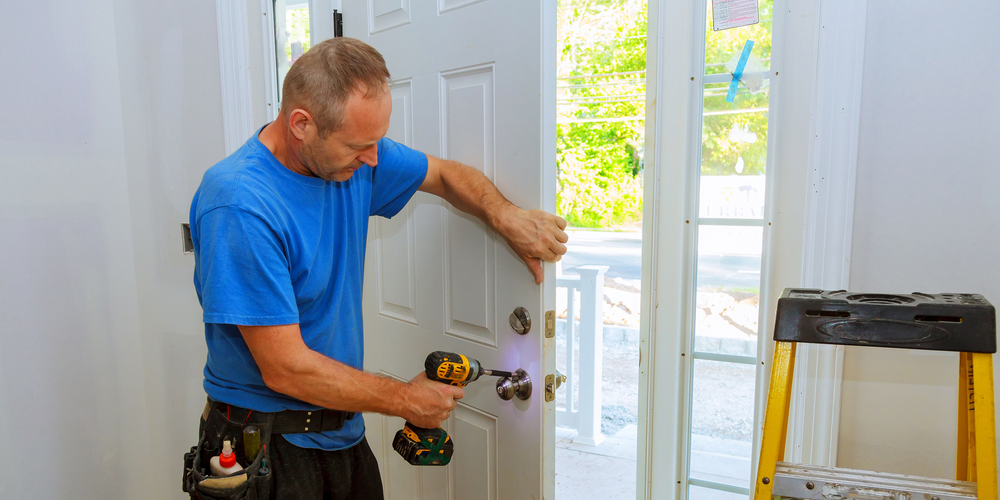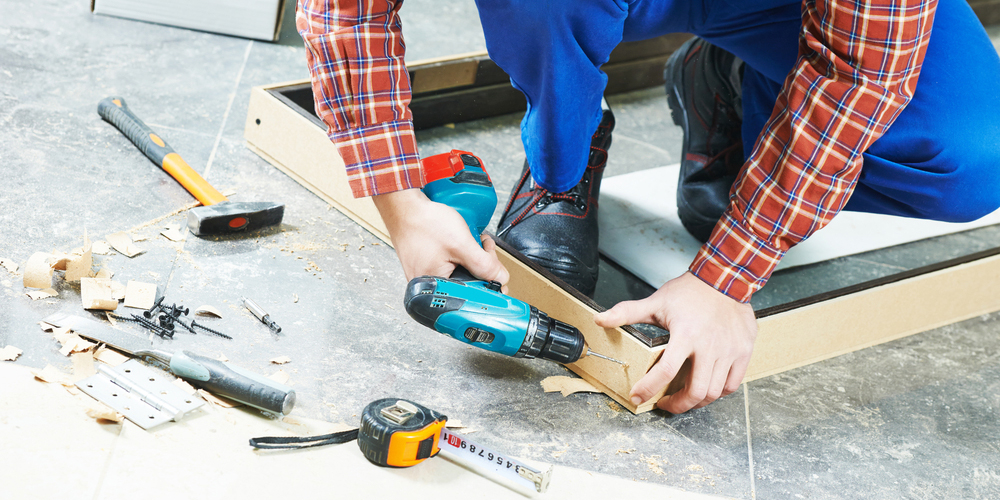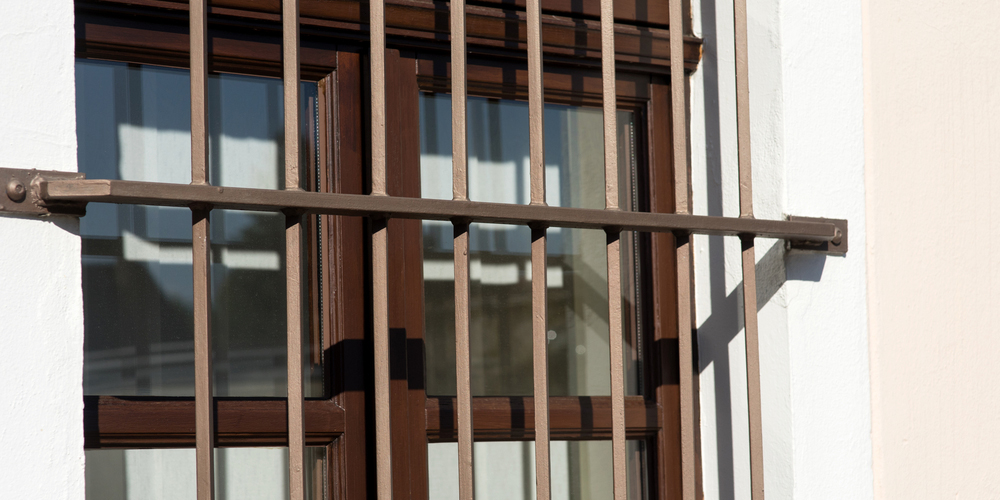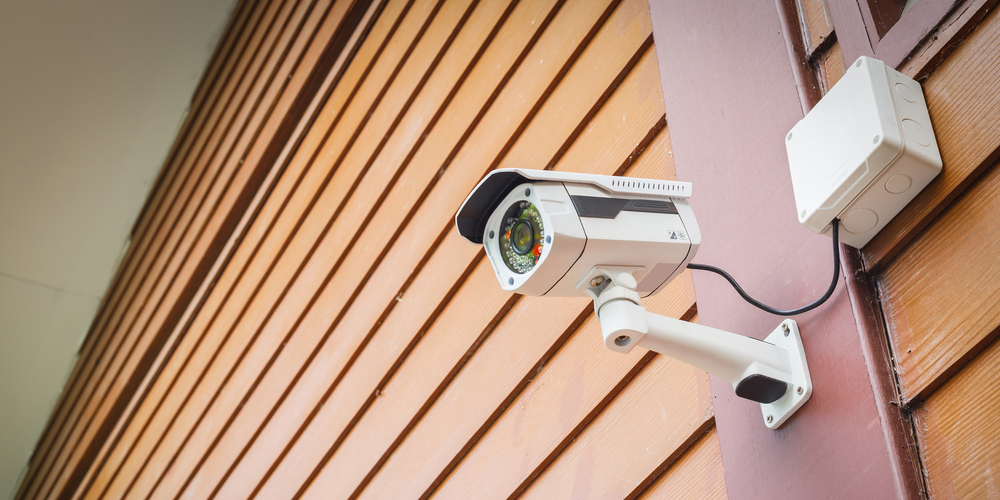Lock Blog
A resource for consumers, locksmiths, and security professionals
A resource for consumers, locksmiths, and security professionals

You can take a look at recent home break-in statistics to see for yourself how important front door security is. There are many approaches that you can take to rectify the common issues with front door security, but below you will find the most pressing fixes. These methods of front door security improvement are intended to get you the best possible results. You should be sure to layer your security, and not just focus on one way of protecting your front door. Be aware of the give and take that comes with ignoring particular aspects of front door security, and the steps you will need to take in order to compensate for certain decisions. Here are the basics you need to know to about building better front door security.
The most foundational part of front door security is the lock that you use. Locks can vary quite extraordinarily in terms of the level of security they offer a home. For that reason, it is of the utmost importance that you make sure you are not using the wrong lock for your front door security. Choosing the wrong lock for the job is only one of the concerns. You also have to be aware of what your lock is vulnerable to. Does it protect against bump keys? Is the metal weak so that it can be broken with blunt force or drilled into? What steps has it taken to fortify itself against covert and violent entry?
If you have not made a point to upgrade your locks, investigate the most trusted door lock brands to find out what your current level of lock security is. If you do not have a high-security product, you will need to consider the cost of changing locks so that you can increase your front door security. The handle or keyed knob is not as important as the deadbolt that you choose. The deadbolt is the most important lock in your home security arsenal because it is harder to manipulate a bolt than a spring loaded latch. The fact that you cannot get the bolt to move without rotating the lock core is the main reason why deadbolts are so important to home security.
No matter how someone tries to attack your front door security, they are going to interact with your lock. If you do not have a lock on your door, then you do not have any front door security. Everything about front door security is built off of the locks you are using. Without knowing about your locks you will not know what other types of front door security you need, and how much more security is necessary. The main consideration is not whether you should upgrade your locks to something stronger, but rather should a locksmith change your door locks for you.
Key Takeaways:
Two doors are always better than one. To improve your front door security, put another door in front of your door. Security screens are perforated metal barriers that have room for additional locks. They are fitted to open out toward the point of ingress, so kicking attacks that rely on pushing the door open are less likely to work. The additional locks are also more likely to discourage covert entry, as you will have an additional deadbolt and keyed knob as part of your front door security. And due to the perforations, you will be able to open your door and see everything outside without placing yourself at risk to any awaiting harm. You will see more than you would through a peephole, while still being somewhat obscured to anyone on the outside.
Your main concern for a security screen is going to be its strength. A higher-quality security screen is going to do more to resist destructive entry. The stronger the metal and welding, the better your defense. But even with weaker security screens, you are still getting more protection than you would with just a standard door. Even if the screen is punctured, there is still your original door to contend with.
One of the most common reasons homeowners do not utilize any type of security screen is because it has a certain effect on the aesthetic of a building. It changes the curb appeal, but in two ways. The first is that it may decrease your curb appeal to certain visitors, pedestrians, etc., but it will also make your home less appealing to a burglar. A security screen projects that the homeowner has an intention to protect their property. There are a wide variety of security screens that you could choose from that not only vary in protection but also have different styles, which might suit your home’s appearance better.
Key Takeaways:

Nothing says front door security more than a better front door. And by better, I am talking about the material that the door is made of, and the process used to manufacture it. Not all doors are made the same. In fact, there is a major difference between interior and exterior doors. This has to do with the core of the door. Interior doors have hollow cores. This makes them lighter and more fragile. Exterior doors should at least have a solid core. For even better protection, a door can utilize an iron or steel core. Doors with metal cores have metal inserts that add more strength than simple hardwood. And if front door security is a large concern, you could go as far as to commission a vault door from one of the best safe companies.
The role of doors in home security cannot be understated. After a certain amount of fortification, the door is going to be the most likely part of your security to fail. Though front door security might start with locks, it is still a matter of protecting your front door. And having a strong front door will do an obviously decent job of improving front door security. It is an obvious and important consideration. It just happens that this type of upgrade is one of the more expensive and invasive changes. When you choose a front door for the purpose of security, you will either have to sacrifice aesthetic choices or invest more heavily in a custom door that fit both the look and security you would like.
Key Takeaways:
The hardware of a lock is everything that is inserted into the door. One of the weak points in front door security is where the lock is installed. This is because holes have been drilled close together, removing large amounts of material. If the removed portions of the door are not reinforced by the installed lock hardware, there will be a need for further protection. You will know how much you need to protect your lock hardware by figuring out what the overall quality is. Most importantly, you should know the amount of force your deadbolt can withstand.
You can strengthen your lock hardware with metal slipcovers. These are items shaped like empty hardcover books. There are installed by taking off the current lock and securing the cover to the door with screws before re-installing the lock again. Once the lock is secured onto the door, the cover will have both, set screws and the lock, holding it in place. This adds another layer of hardened material that keeps the door from fracturing around the holes that have weakened it.
Your hardware might be incredibly strong already, but it does not harm your front door security to install one of these covers. Such slipcovers are manufactured in a range of metals and gauges. The weaker your lock, the stronger your cover will need to be. You might also want a cover that extended to shield the door jamb (making sure that this does not negatively affect how the door opens and closes) and provide more shielding to the bolt of your deadbolt. Utilizing a product like the Door Devil home doorframe is a great way to shield your door jamb and further protect your deadbolt. If your bolt is not extremely strong, the door could possibly be pried open, or the bolt could be cut. Shield anything that you fear is weak enough to break under the rather formidable strain.
Key Takeaways:
There is a fast, cheap, and extremely effective way to significantly improve your front door security, but is going to sound like just another one of those security myths. Replace the three-quarter-inch set screws for your strike plate and hinges with 3-inch screws. And that is it for this method of front door security. As unlikely it may sound, it is a tried and true method for front door security improvement. Once you have done this, it is more likely that your door will splinter and fracture than it is that the door will be successfully kicked in.
It sounds a little unbelievable, so I will explain the basics of why this is so effective. Essentially, when a standard door is kicked, the bolt of the deadbolt exerts pressure on the strike plate. With a pair of ¾-inch set screws, the strike plate is only secured into the door trim. The door trim is not substantially strong, so strike plate will be torn off the door when the trim breaks. When the strike plate tears away, it will take the trim and a bit of the jam with it. This leaves the bolt with nothing to extend into. With just 3-inch set screws, you are biting into the stud of the door jam, and the strike plate is not going anywhere easily.
The hinges are important because the same thing that can happen to the strike plate is likely to happen on the other side of the door. When your hinges come out of the door, the door can just be pushed over. This will only happen if you have secured the strike plate and not the hinge side. The most likely point that door will break during a kicking or battering attack is the strike plate. The second area of worry is the hinge side of the door. Keep in mind that this will not make your front door security equivalent to a vault, but it will exhaust most criminals before they can break the door down.
Key Takeaways:

A lot of doors are extremely close to windows. Some doors even have glass or windows on them. Both of these situations can do a lot of damage to your front door security if they are not addressed. There are three main ways to take care of these issues. The first is that you remove the glass, at least to the point so that someone who smashed it would not be able to reach their hand through to manipulate the thumbturns on the other side. (If you have a double-sided deadbolt on your front door, be aware that this is not an issue, but your front door cannot be considered an exit for any emergency planning.)
The next thing that you could do is place bars over the glass, making sure that said bars are close enough together that no one can reach through them. This is not the answer for most people because very few homeowners like the idea of barred windows. It is a very particular aesthetic choice, and if you want something more subtle, the third option is probably more your speed.
The third thing that you can do to strengthen your windows is to place security film over them. This is an adhesive tape similar to window tint, but it can be completely clear. A perfect example is the BDF S8MC window security film. Security film does not make your window smash-proof, but it will discourage most burglars by keeping the glass from shattering easily. The strength these films offer will depend on the brand you choose. To know what you need it is important that you find a way to assess your security yourself.
Key Takeaways:
Security devices that secure the door from the inside are rather one-dimensional, but that is not the same as being ineffective. How they work is by securing a locked door from the interior of the home. This can be at the base or along the middle of the door with barricades that fall into tracks or holders. There are also objects that work like propped up chairs that extended from the door knob to the ground. There as hooks that loop around door handles and onto something like the strike plate. Chain locks and flush door latch bolts are not as effective as the other products, but as long as you are not getting your security from Home Depot, chances are it will provide some decent protection.
The issue with these types of devices is that they are not effective for your primary entrance because you will not be able to undo them from the outside. Unless someone is perpetually inside the home to let you in, there will be no way to get inside. Also, there is no way to set them up from the outside of the home when you are leaving. If you looking to stay safe while living alone, you might be able to use these methods while you are in the home, but not many other times. You cannot get into a door that has been secured this way without breaking the security device, and therefore are only good for front door security if your front door is not your primary entryway.
Key Takeaways:
A lot of security comes from criminals believing that they could not get away with the break-in. That means that they might be stopped or discovered before they have gained entry, or that they might be seen in by someone who could identify them. That is why one of the best ways to increase the security of your front door is to make sure the entryway is visible. If you create obstructions, you are advertising to criminals that there is a way to covertly interact with your security. They will be emboldened to take more extreme measures to break-in because they will not fear being easily discovered.
Obstructions can be fences, shrubs, or even something as seemingly harmless as darkness. Anything that allows people to attack your door with some level of secrecy, damages your front door security. If there is going to be an attack you want to be able to capitalize on passers-by and neighbors, who may be looking at the right place at the right time. Something like lighting might be affected in emergencies, but there are ways to keep your security strong during a power outage. And when it comes perimeter security, you might not want to give up the protection of a fence, so it is important that the boundary does not present a visual impediment. If someone gets over your fence, you want outsiders to be able to see them.
Key Takeaways:

A great way to improve your front door security is to keep it under close observation. There are two main ways to go about monitoring. You can use some form of alarm/security system (whether that unmonitored or monitored security system), or invest in a few of the best surveillance cameras. You can, of course, use a mixture of both of these methods, but is important you understand both to an equal level.
For example, there are a few things that you need to know about video recording. But some of these new cameras come with notification applications that can send alerts when the motion based recording is activated. There are also items such as smart doorbells that offer video recording along with other features that might be appropriate for monitoring your door. And you may also want to consider smart locks vs traditional locks, as these can also send notifications if they are WiFi enabled, and keep a log of the locks usage including when it was opened. Homeowners can opt to go the DIY route and purchase an easy to set up outdoor camera, such as the Nest Cam outdoor security camera. In lieu of this, they can decide to enlist the services of a surveillance and monitoring company.
The most important aspect of monitoring is that in the event of a break-in, someone who can intervene is contacted. If the response time, and response in general, cannot be counted on from the party, or parties, reached with the notifications, monitoring is not providing much security. When the monitoring is not thwarting a burglary, it is not completely worthless. You can use your documented evidence to potentially find the criminal, prosecute them, have your stolen property returned, and learn more about the weaknesses of your front door security. You might not be able to do all of that every time, but those are the possibilities that monitoring your front door allows you to potentially take advantage of.
Key Takeaways:
There is a lot of improvements that you can make to your front door security. Even within these nine methods, there are seemingly endless variations and approaches. And this is not everything that you can do to protect your front door. There is always more that can be done. But what you have to consider is already overwhelming enough without me piling on another way to improve your front door security. Once you find the course of action you would like to pursue, you need to decide if you should upgrade your security yourself or enlist the help of a professional. If you don’t know where you would start with your front door security, it might be worth it to begin this process with a local locksmith. Stay safe and protect your front door.
Category: How To's, Residential, Safety & Security